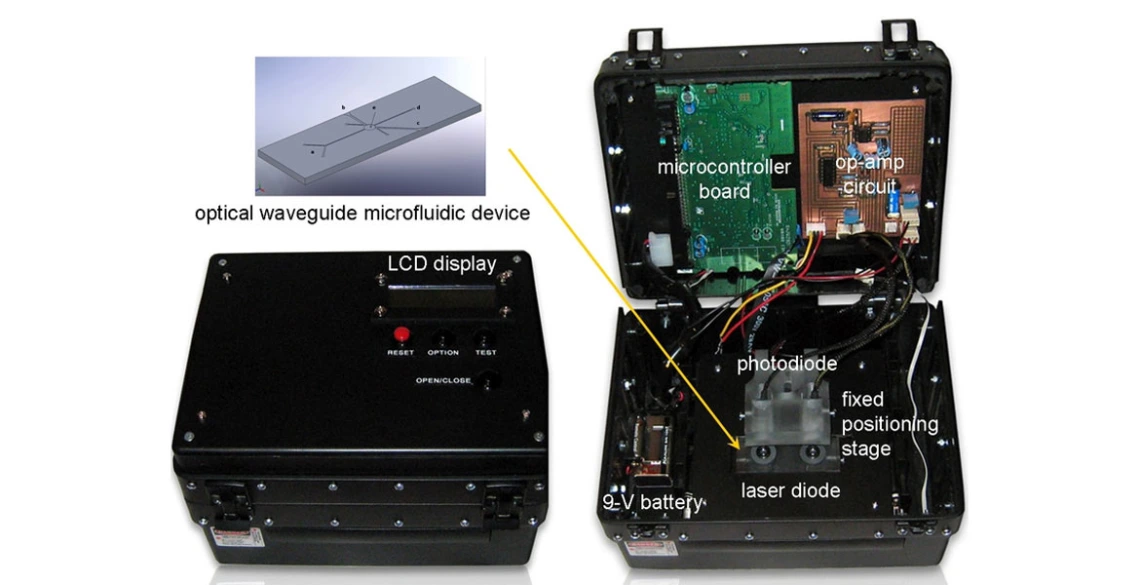‘Lab on a Chip’ Detects Human, Agricultural Contaminants
The UA's Jeong-Yeol Yoon is using glass-slide laboratories to detect E. coli in water and vegetables and to monitor disease in livestock.

The first prototype of lab-on-a-chip system for detecting microbes in water, food and air. (Photo: UA Biosensors Lab)
Detecting water and foodborne contaminants usually involves collecting a sample, sending it to a laboratory and waiting for it to be filtered, incubated, tested and identified under a microscope. If a critical infection is suspected, say for E. coli, the pathogen may already have multiplied and spread before the report arrives days later.
A series of "lab on a chip" applications in development at the University of Arizona can identify pathogens in minutes rather than days, using a simple device (which may be attached to a faucet) that can deliver results locally.
Invented by chemical and electrical engineers in the late 1990s, the lab on a chip, or LOC, concept is based on the integrated circuit, where encapsulated wires and circuits are integrated into a semiconductor chip with electricity flowing through it.
"In lab on a chip, instead of using electricity, the liquid flows," said Jeong-Yeol Yoon, an assistant professor in the UA department of agricultural and biosystems engineering and a member of the BIO5 Institute.

